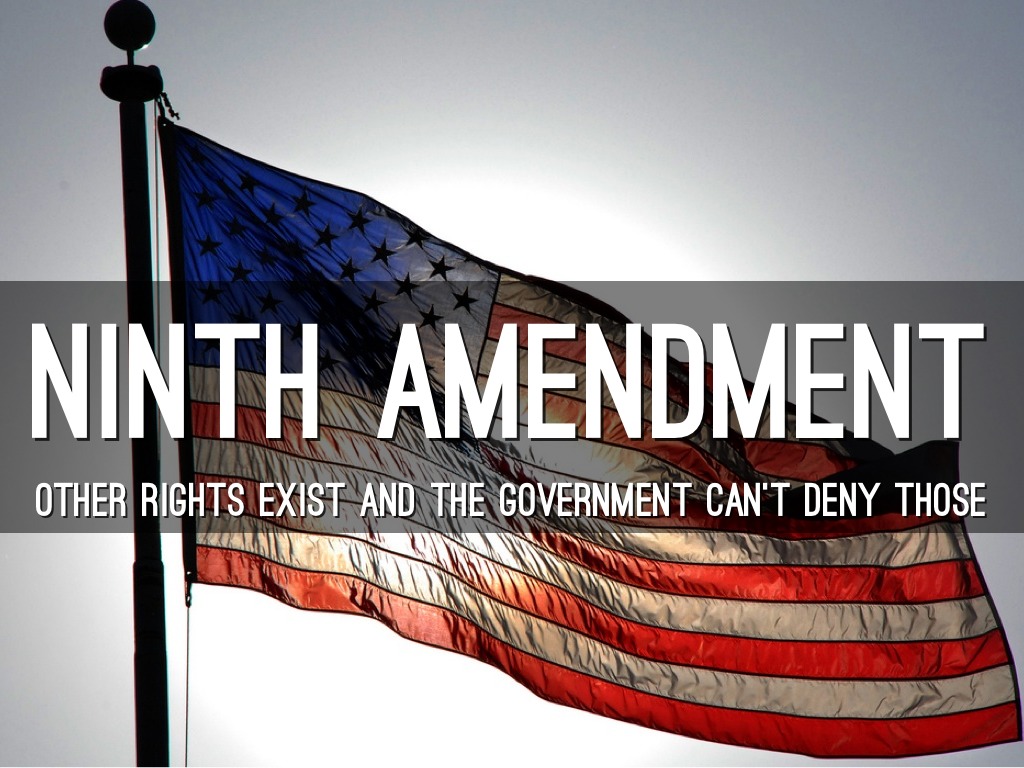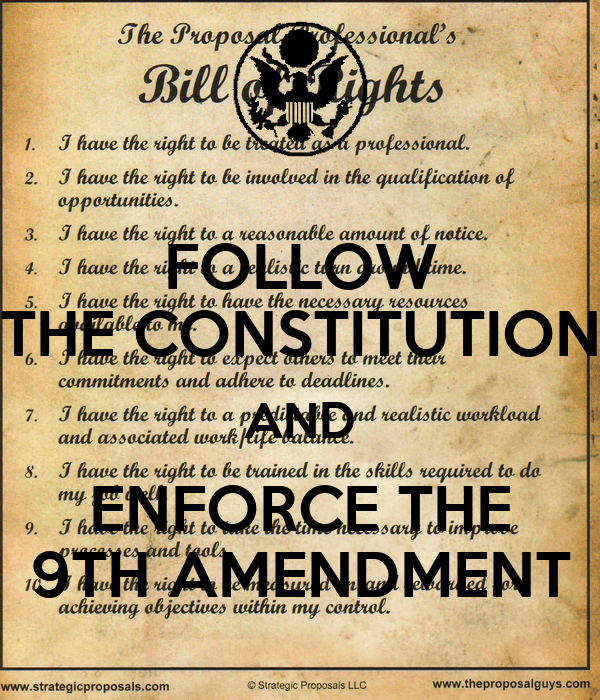9th Amendment – Ninth Amendment
Ninth Amendment
The 9th amendment of the Bill of Rights to the United States Constitution addresses rights, retained by the people, that are not specifically enumerated in the Constitution.
The 9th amendment of the Bill of Rights
The enumeration of the Constitution, of certain rights, shall not be construed to deny or disparage others retained by the people.
The constitutional right of private gun ownership stands even without the Second Amendment. Suppose, against all evidence, that its drafters really did mean state governments instead of individuals when they wrote that “the right of the people to keep and bear arms shall not be infringed.” In that case, the right to gun ownership would still be protected, but under the Ninth Amendment. That amendment was drafted to address the concerns of those who feared that if certain rights were singled out for protection in the Bill of Rights, all other rights not singled out would be insecure. This amendment made clear that the enumeration of certain rights in the Bill of Rights was not exhaustive, and was not meant to imply that they were the only rights that the people enjoyed.
The connection to the right to bear arms is clear: Since a common-law right to bear arms for self-protection and hunting was part of the British inheritance that Americans brought with them to these shores, it would have been protected by the Ninth Amendment. The reason for mentioning the importance of the militia in the Second Amendment was probably to justify the Framers’ decision to make explicit mention of the right to bear arms rather than to leave it as an unenumerated right protected by the 9th amendment of the Bill of Rights.
cited https://www.historyonthenet.com/9th-amendment-of-the-bill-of-rights
Ninth Amendment:
The enumeration in the Constitution, of certain rights, shall not be construed to deny or disparage others retained by the people.
The Ninth Amendment provides that the enumeration of certain rights in the Constitution should not be construed to mean that the Constitution does not protect rights that are not enumerated. The Amendment was included in the Bill of Rights to address fears that expressly protecting certain rights might be misinterpreted implicitly to sanction the infringement of others.1
Few Supreme Court cases offer significant analysis of the Ninth Amendment. Prior to 1965, litigants occasionally invoked the Amendment, often along with the Tenth Amendment or other provisions of the Bill of Rights, to challenge the constitutionality of government actions, but the Court consistently rejected those claims.2 In 1965, in Griswold v. Connecticut, a majority of the Court cited the Ninth Amendment, along with the substantive rights protected by the First, Third, Fourth, and Fifth Amendments, and held that the Constitution protects penumbral rights of ‘privacy and repose’
that bar a state from prohibiting the use of contraception by married couples.3 By contrast, in the 1973 case Roe v. Wade, the Court grounded a constitutional right to abortion in the Fourteenth Amendment rather than the Ninth.4
Overall, the Court has generally treated the Ninth Amendment as a rule of construction for the Constitution rather than a freestanding guarantee of any substantive rights. Thus, in Richmond Newspapers v. Virginia, a plurality of the Court referred to the Amendment as a sort of constitutional ‘saving clause,’ which, among other things, would serve to foreclose application to the Bill of Rights of the maxim that the affirmation of particular rights implies a negation of those not expressly defined.
cited https://constitution.congress.gov/browse/essay/amdt9-1/ALDE_00013641/


